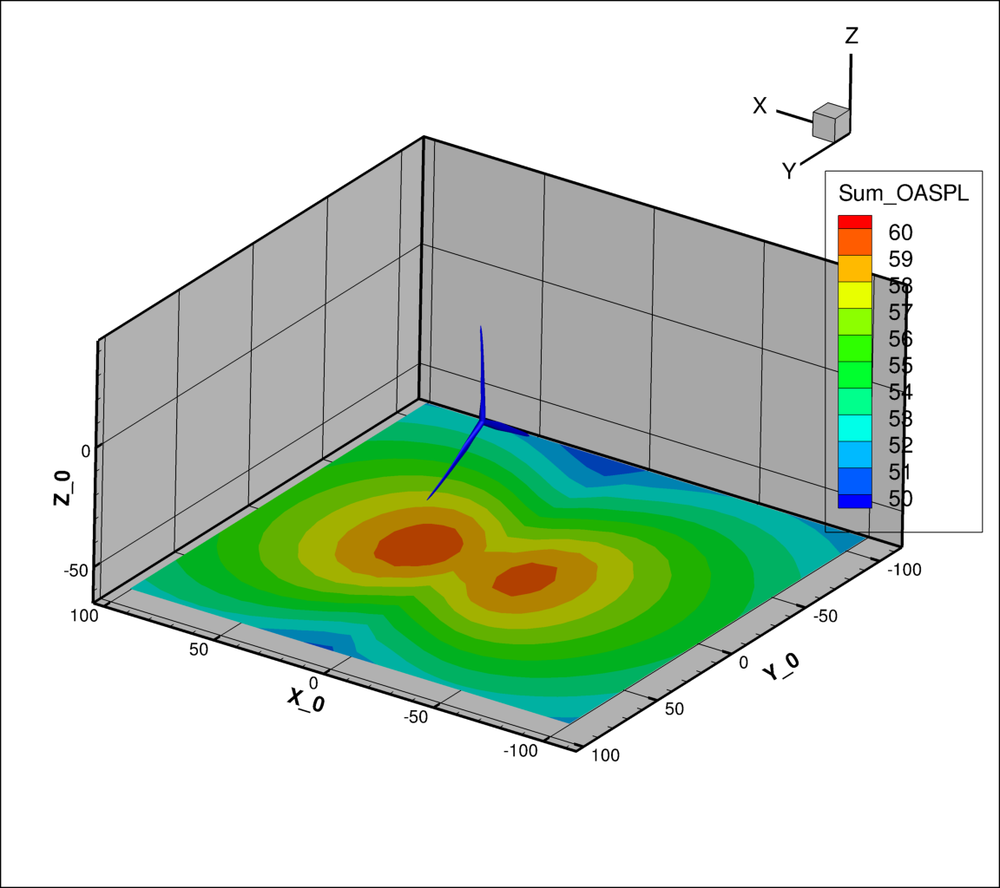TAP
The TAP (turbine acoustics prediction) software uses an automated process chain to simulate trailing edge noise on 2D airfoil sections. In a first step, 2D RANS calculations are generated with the DLR TAU code - a simulation software for calculating viscous or non-viscous flows around complex geometries. Based on this, the stochastic FRPM (fast random particle mesh method) is used to model time-resolved noise sources at the trailing edge, which are then propagated using the PIANO (Perturbation Investigation of Aerodynamic Noise) aeroacoustic code. PIANO simulates the aeroacoustic noise generation and calculates the sound propagation in non-uniform flows.
Furthermore, two additional acoustic sources are modelled using semi-empirical methods: Firstly, the turbulent leading edge noise, which is generated by the interaction of the turbulent inflow with the leading edge. And secondly, the turbulent trailing edge noise for the case of flow separation on the rotor blade. For detached flows, more complex CAA simulations would have to be carried out than are taken into account in the automated process chain in order to obtain reliable results. For this reason, and to achieve a faster prediction, a semi-empirical method is used here for the turbulent trailing edge noise.
For the extrapolation to an entire plant, the directional characteristics of the individual profile sections simulated in the first step are read in, as well as the geometric key data of the plant, such as tower height and operational conditions such as rpm and wind speed. For arbitrary observer points, the trailing edge noise of each rotor blade section are extrapolated to 3D over the rotor circumference, summed up and averaged if necessary. As output spectra at single observer points and noise signatures are possible.

Key features
- Fast prediction method for trailing edge noise at rotor blades
- CFD/CAA based method, combined with fast semi-empirical methods
- Evaluation at certification points and noise maps
Areas of application
The software TAP yields noise predictions for wind turbines in the form of signatures as well as for individual observer points. The advantage of this method, are fast turnaround times, although the trailing edge noise for attached flows is determined by CFD/CAA methods and not by semi-empirical models. For example, different novel rotor blade designs can be evaluated and compared. The software has already been successfully applied in the IEA Wind Task 39 - Quiet Wind Turbine Technology, Wind turbine noise code benchmark.
License notice
Access to these software products can only be granted if the organization you are representing holds a valid license or your organization is interested in signing such a license. If either of the aforementioned two points are fulfilled please get in touch with us providing additional information. Afterwards, we will support you in getting access to our software products. Please note, that we are, in general, not signing license agreements with private individuals.
